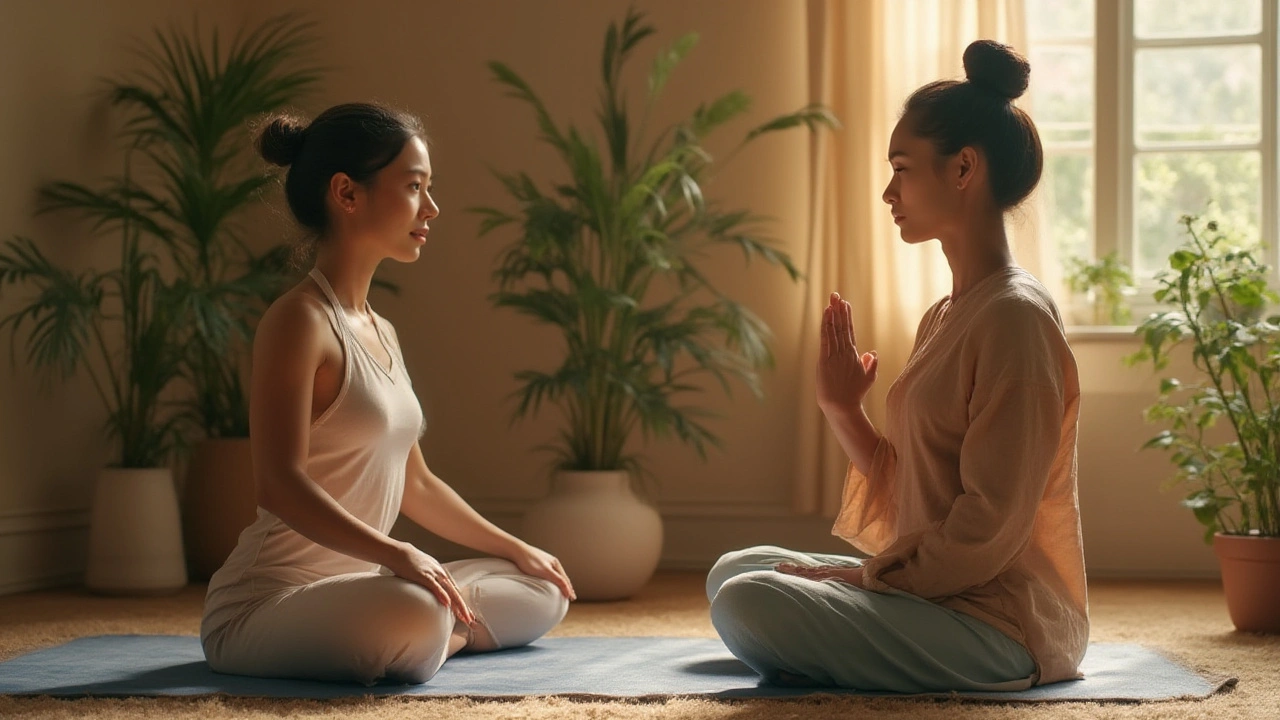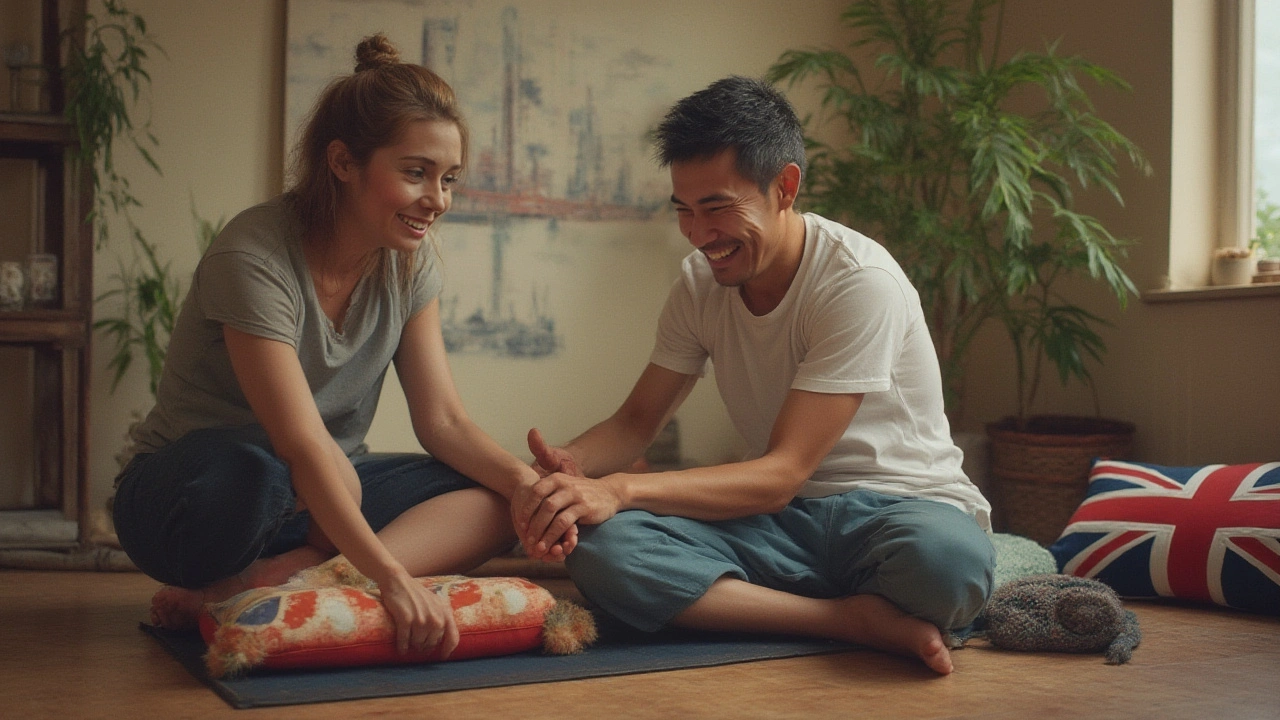Curious what happens during your first Thai massage in London? Discover hands-on tips, the real deal on techniques, and how it feels—straight from experience.

- Created by: Archer Caldwell
- Completed on: 11 Jul 2025
- Categories: Thai Massage
Key Points: Thai Massage Essentials and Your First-Time Checklist
If you’re thinking of booking your first Thai massage, it’s totally normal to feel a bit nervous. You might picture relaxing music, soothing scents, or maybe even a little nap halfway through—but Thai massage is in a league of its own. Here’s the quick scoop for those who can’t wait: expect deep stretches, slow and rhythmic movements, and a unique blend of yoga and massage techniques—all while you’re fully clothed.
Your therapist uses hands, elbows, knees, and feet to work on your body. It can be both intense and incredibly relaxing (sometimes at the same time). The session is usually done on a mat on the floor, and you’ll probably get asked about problem spots or injuries before you start. If you’re worried about pain, don’t be shy about speaking up—your comfort matters. Want to know prices? In London, expect anywhere from £50 to £90 for an hour-long session. And yes, it’s normal to feel taller, lighter, or like you just finished a workout afterwards.
If you want to make the most out of your first session, wear loose clothes, arrive a few minutes early, and skip the big lunch. Now, let’s dig deeper into what this mind-bending experience is all about, why people swear by Thai massage, how to find a good place in London, and what actually happens during your session.
Comprehensive Guide to Your First Thai Massage: What It Means, Why It Works, and How It Feels
So, what’s Thai massage, really? Picture this: a technique perfected in Thailand over 2,500 years. It blends acupressure, deep tissue work, and gentle stretches inspired by yoga. The difference is clear the moment you step into the room. Instead of an oil-slick table, you’ll see a padded floor mat—soft, clean, ready for action. You keep your clothes on (yes, really), and most practitioners will hand you loose pajamas if you show up in jeans or a skirt.
Your therapist starts by asking about problem areas, sometimes with a quick health quiz. They’re not being nosy—it’s important, since Thai massage can be intense, especially for a first-timer. Ever heard the phrase "lazy man’s yoga"? That’s Thai massage in a nutshell: your therapist bends, twists, and stretches your body for you, holding you in poses that’d make an Olympic gymnast sweat. If you’re stiff, spend too much time at a desk, or just want to switch off, this is next-level relaxation.
The process is methodical. Therapists use their entire body to apply pressure, roll muscles, and shift your tension spots. One minute they’re kneading your shoulders with their palms, next they’re using feet for deeper pressure along your back. You might hear some gentle pops or cracks as joints loosen—completely normal, and a sign things are moving as they should.
But how did this all become so popular in the UK? Over the past decade, Thai massage studios have been popping up all over London, from flashy spots in Soho to hidden gems in Camden and Shoreditch. With people glued to screens more than ever, the need for real, hands-on relaxation has never been greater. According to a survey by the British College of Massage Therapy in 2024, nearly 63% of Londoners said massage (and specifically Thai) helped them manage stress better than any other wellness practice.
Don’t expect quiet spa music and hushed whispers—Thai massage can be lively. Therapists sometimes use rhythmic rocking, breathing cues, and even a quick clap or stretch to re-energize you. It’s both a release and a recharge, all at once. The best part? There’s no one-size-fits-all. Therapists customise the session for you, working harder on tight hips, easing off if things feel too intense.
Ever wondered if it works? People who try Thai massage often say their posture improves, their sleep deepens, and aches melt away. The science lines up, too: research in the Journal of Clinical Medicine (2023) found that regular Thai massage sessions reduced back pain, boosted flexibility, and even improved mental clarity in office workers. No magic, just years of tradition and a keen understanding of the body’s mechanics.

Your Thai Massage in London: How to Find the Right Spot, What Happens in a Session, and Money Matters
The moment you decide to book a Thai massage, expect more options than you can shake a stick at. Central London is packed with massage studios—some traditional, some modern, some with neon Buddhas blinking in the window, and others offering strictly clinical vibes. So, how do you pick a good place?
- Look for certified therapists with training from recognised Thai massage schools (like Wat Pho in Bangkok, which is as legit as it gets).
- Scroll through online reviews. Google and TripAdvisor are handy, but locals trust Word of Mouth—see what friends or Facebook groups say.
- Don’t be fooled by low prices. Anything below £40 an hour in Zone 1 or 2 probably means shortcuts. Expect a fair rate of £50–£90 depending on extras (herbal compresses cost more, so does aromatherapy mixing).
- Call first and ask about the space. Floor mats? Heated rooms? Showers or changing areas? These tiny details can make or break your first visit.
If you’re travelling across town, build a little map of options. Camden Market is famous for its cluster of Thai studios, while Notting Hill has posh boutique setups with private rooms and herbal teas on tap. London’s always buzzing, so it’s smart to book ahead (especially after work or at weekends—slots fill up fast), but some places even offer last-minute bookings through apps.
So, you’ve got your booking—what next? Show up 10 minutes early to fill out paperwork. Most places ask basic health questions: injuries, recent surgeries, allergies. Slip out of your shoes, put on the oversized pajamas, and get comfy on the mat. First-timers will often start lying on their back, feet pointed towards the therapist, who begins with gentle pressing and rocking to get you relaxed.
The aromatherapy? Sometimes you’ll get a whiff of lemongrass or jasmine, but classic Thai massage relies way more on touch than scents. Music is usually gentle—think flutes or soft rain, never pop hits. The therapist uses palms, thumbs, elbows, and sometimes knees or feet to loosen knots and stretch limbs. At times you’ll be flipped, twisted, or even gently walked on (don’t be alarmed, they’re incredibly precise).
Feel free to ask for more or less pressure at any time. This is your hour (or 90 minutes if you’re going big), and communication is key. It’s all about finding that sweet spot between stretch and release without discomfort. Nodding off? Happens to the best of us. Just let yourself sink in.
At the end, most therapists finish with a bit of scalp or face work, then ease you back into reality with a glass of water or tea. You’ll probably stand up feeling lighter and more limber. Some people say they feel slightly spaced-out or floaty, especially after their first session. That’s normal—just don’t rush back onto the Tube straight away.
| Aspect | Thai Massage | Swedish Massage |
|---|---|---|
| Clothing | Loose/fully clad | Usually nude/undergarments |
| Location | Mat on floor | Massage table |
| Movements | Stretching, rocking, joint manipulation | Gentle stroking, kneading |
| Intensity | Varies—deep to firm | Mild to moderate |
| Oils Used | Rarely | Frequently |
| Typical Duration | 60–90 min | 30–90 min |
| Focus | Flexibility, energy flow | Muscle relaxation |
| London Price (Avg.) | £55–£90 | £45–£85 |
When talking pricing—don’t forget to factor in tipping. It’s nice but not essential in most London studios. Gratuity of 10–15% is appreciated if you had a standout experience. Many places will have card machines, but a couple still take cash only, so plan ahead.
Common Concerns: Honest FAQ for the Cautious, Curious, or Absolutely New
Everybody has questions before their first time. Here are the ones you shouldn’t be embarrassed to ask:
- What do I wear to a Thai massage? Loose clothing is best—tracksuit, yoga pants, or leggings. Most studios provide their own, anyway.
- Will it hurt? Not if you communicate. There may be pressure and deep stretches, but nothing should be painful. Speak up if it is.
- How do I find the best Thai massage near me? Search local reviews for keywords like "authentic," "clean," and "certified." Ask to see therapist certifications if in doubt.
- What’s the difference between Thai and deep tissue massage? Thai involves stretches and often uses full-body movement, while deep tissue is focused on kneading specific muscles.
- Can I get a Thai massage if I’m pregnant? Only with your doctor’s blessing, and stick with therapists who are qualified in prenatal Thai massage.
- Should I tip? You don’t have to, but it’s nice if service was excellent—10% is common.
- How long does it take to see benefits? Sometimes instantly—people often report better sleep and less tension after just one session.
- Anything I shouldn’t do before? Don’t eat a big meal or drink alcohol. Empty pockets, relax, and let go of any expectations.
- What if I fall asleep or drool? Completely normal—it means you’re relaxed, not rude!
- Is Thai massage right for everyone? Great for most people, but avoid if you have serious injuries, recent surgeries, or certain chronic illnesses without talking to your GP first.
So—ready to experience a real Thai massage in London? Start simple, trust your therapist, and get set for a session that stretches, sparks, and absolutely recharges.
thai massage makes you feel alive in a way no oil rub or spa playlist can manage. Looking for a new way to de-stress or just want to shake up your wellness routine? This is it. Book your session, relax, and let yourself be amazed at what your body (and mind) can really do.
Discover how Thai massage in London melts stress, boosts flexibility, and brings authentic wellness closer to home. Full guide with tips, prices, and what to expect.
Explore which essential oils are used in Thai massage, how they work, and the unique benefits they deliver for relaxation, pain relief, and wellbeing.


